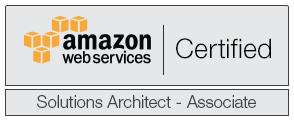Update:
Check out my updated re-certification on the new 2019 exam... here
Let me start by saying, for this certification I studied and prepared more than any certification I have done before and I have done a number of certifications throughout my career; Microsoft, Sun, IBM, Oracle and now AWS. It does feel like there is a mountain of content to get through, and then ensuring you know it at the correct level of detail for the exam.
I booked the AWS Solutions Architect Professional exam 5 weeks after the associate level one and set a couple hours a day aside to study... During the last 2 weeks however, those couple hours became all my available hours every day, it was all I focused on, including 8+ hours a day on the weekends.
Main 4 resources I used:
- YouTube
- The re:Invent sessions videos are an essential resource
- My major topics playlist:
- Watch these twice:
- Linux Academy
- These guys really impressed me, the content in the pro level certificate was excellent, I found it had more depth than A Cloud Guru, well worth the $29 per month subscription.
- Cloud Guru
- Decent structured content that covers the highlights of all the topics defined in the exam blueprint.
- The discussion forum is an excellent source of tips and discussions on the practice exam questions.
- The official practice exam
- This was a good eye opener, into how hard some of the questions can be. I do feel that some of the questions are badly articulated which makes them almost impossible to answer, however working through every question and researching the answers was invaluable. There were also a couple of those questions on the real exam... word for word.
Other Resources (Summary / Study Notes):
The main aws faqs to look at:
Final thoughts:
All the guides and sites recommend reading a ton of white papers, but to be honest, I read only 4 or 5 of them..and I felt that the time spent was a waste. It seems all the content was in all the youtube vids and online courses already.
I did see a lot of people mention that they were pressed for time during the exam, but I found that I finished the 77 questions with a good hour to spare. To mention though: I did not go back and review any of my answers. I have always found in the past, that I rarely change my initial answer during the review phase, and I was reasonably confident that I had done enough.
End Result:
Overall Score: 83%
Topic Level Scoring:
1.0 High Availability and Business Continuity: 90%
2.0 Costing: 100%
3.0 Deployment Management: 85%
4.0 Network Design: 57%
5.0 Data Storage: 81%
6.0 Security: 78%
7.0 Scalability & Elasticity: 90%
8.0 Cloud Migration & Hybrid Architecture: 85%
Topic Level Scoring:
1.0 High Availability and Business Continuity: 90%
2.0 Costing: 100%
3.0 Deployment Management: 85%
4.0 Network Design: 57%
5.0 Data Storage: 81%
6.0 Security: 78%
7.0 Scalability & Elasticity: 90%
8.0 Cloud Migration & Hybrid Architecture: 85%




